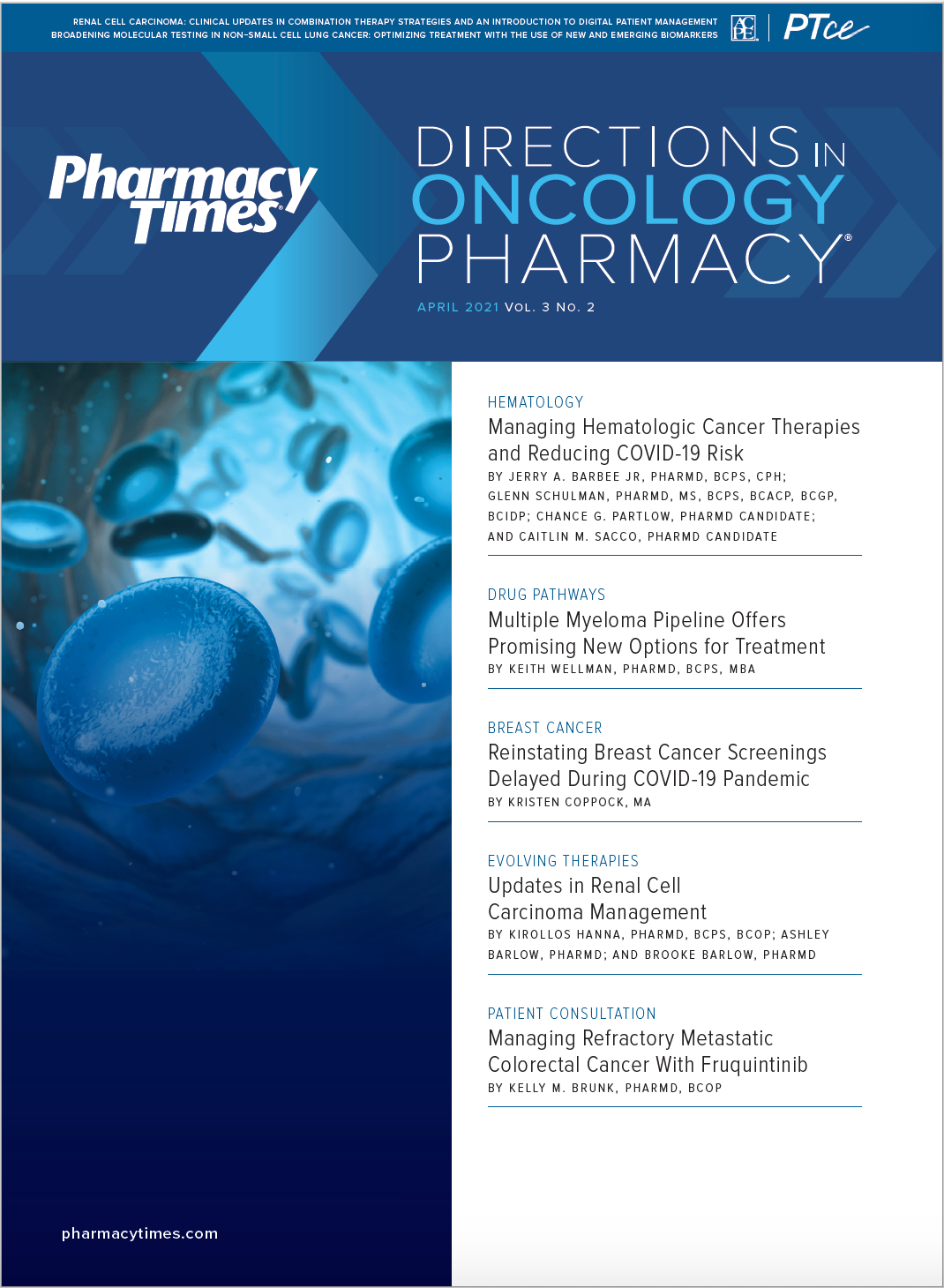Publication
Article
Pharmacy Practice in Focus: Oncology
Brown Bag Consult®: Acute Myeloid Leukemia and the Community Pharmacist’s Role
Author(s):
As the most accessible member of the health care team, the pharmacist can provide patients with cancer with the information and support necessary to get through what could be the most challenging time in their lives.
Affecting both males and females, acute myeloid leukemia (AML) is an aggressive hematologic cancer caused by the proliferation and accumulation of immature precursor blood cells (myeloblasts). Identifying the disease’s signs and symptoms can help patients seek prompt care and ideally reduce its impact.
Pharmacists are often thought of as the most trusted and accessible health care professionals in the community. Because of this perception, they can help patients understand possible signs and symptoms of illness, and assist with follow-up care for those who are diagnosed with AML.
As the most accessible member of the health care team, the pharmacist can provide patients with cancer with the information and support necessary to get through what could be the most challenging time in their lives. Willingness to help at this crucial time demonstrates a caring and concern that patients likely will never forget.
The Case
JP is a 69-year-old man who has been coming to your pharmacy over the past decade. He stops in today to get his first dose of vaccine for coronavirus disease 2019 (COVID-19) and mentions to you that he has been very tired and feels joint pain. He looks frail and you become concerned. He brushes off your concern and explains that he had a negative COVID-19 test a few weeks ago after thinking he had been exposed. He shows you the results, saying maybe his aches are from shoveling snow and general winter blues. Additionally, he has found it mentally hard not being able to travel and see family and has been feeling depressed. JP agrees to check back in with you if he does not start to feel better.
Brown Bag Consult®
You ask JP, when he picks up his refill medications a week later, how he is feeling. He explains he is still feeling fatigued, has experienced new-onset headaches, and bruises easily. He shows you a large bruise on his right calf as evidence, saying he still feels that his joints hurt.
You offer to call JP’s primary provider to get him in for a checkup and maybe some laboratory work. He tells you he felt fine after his COVID-19 vaccination. You ask him if he would be interested in participating in a brown bag session. You explain what happens during the session and tell JP you are interested in reviewing his medications and lifestyle. This would allow him to maximize his medications, which may also have a positive financial impact and improve his general health. JP nods and appreciates the opportunity to talk with you in depth, one on one. He will schedule a time with you after he follows up with his primary care provider.
JP stops in at the pharmacy for his second COVID-19 vaccination and to tell you he has been diagnosed with AML. Even though the incidence of AML is relatively low, given JP’s age and some other risk factors, his prognosis is poor. This is a shock to JP as he will have to undergo chemotherapy and possibly a transplant if he is eligible. He is worried about his finances, as well as complicated terms such as hypomethylating agents, blast percentage, relapse, and complete response. He doesn’t quite know what it all means for him.
You offer to take some time and help him generally understand AML and review his current medications. JP is thankful for your help, and for the pharmacist-patient relationship. The pandemic has made provider conversations and developing relationships difficult, and he expresses how he feels cared for and appreciates the compassion at your pharmacy.
Upon reviewing JP’s updated medication profile at your pharmacy, you find the following:
- Atorvastatin 40 mg daily
- Irbesartan/hydrochlorothiazide 300 mg/12.5 mg daily
- Metoprolol 25 mg twice daily
- Fluoxetine 20 mg capsule daily
- Alprazolam 0.5 mg as needed for sleep, anxiety
When JP comes in for his scheduled appointment, you notice the following additional medications in his bag:
- OTC daily multivitamin
- OTC enteric-coated aspirin 81 mg
- OTC vitamin D3 125 mcg (5000 IU)
- Ibuprofen 200 mg tablets as needed
After reviewing JP’s medications, you realize he would benefit from a follow-up appointment to see how he is processing his AML diagnosis. What can you tell JP about AML and the chemotherapy he may be prescribed? What can you tell JP about possible medications he may need to sustain postremission maintenance?
JP appreciates your help, and trusts your advice and recommendations as he starts his cancer care journey.
JILL DRURY, PHARMD, BCOP, is a clinical pharmacy specialist in Chicago, Illinois, and Milwaukee, Wisconsin.







